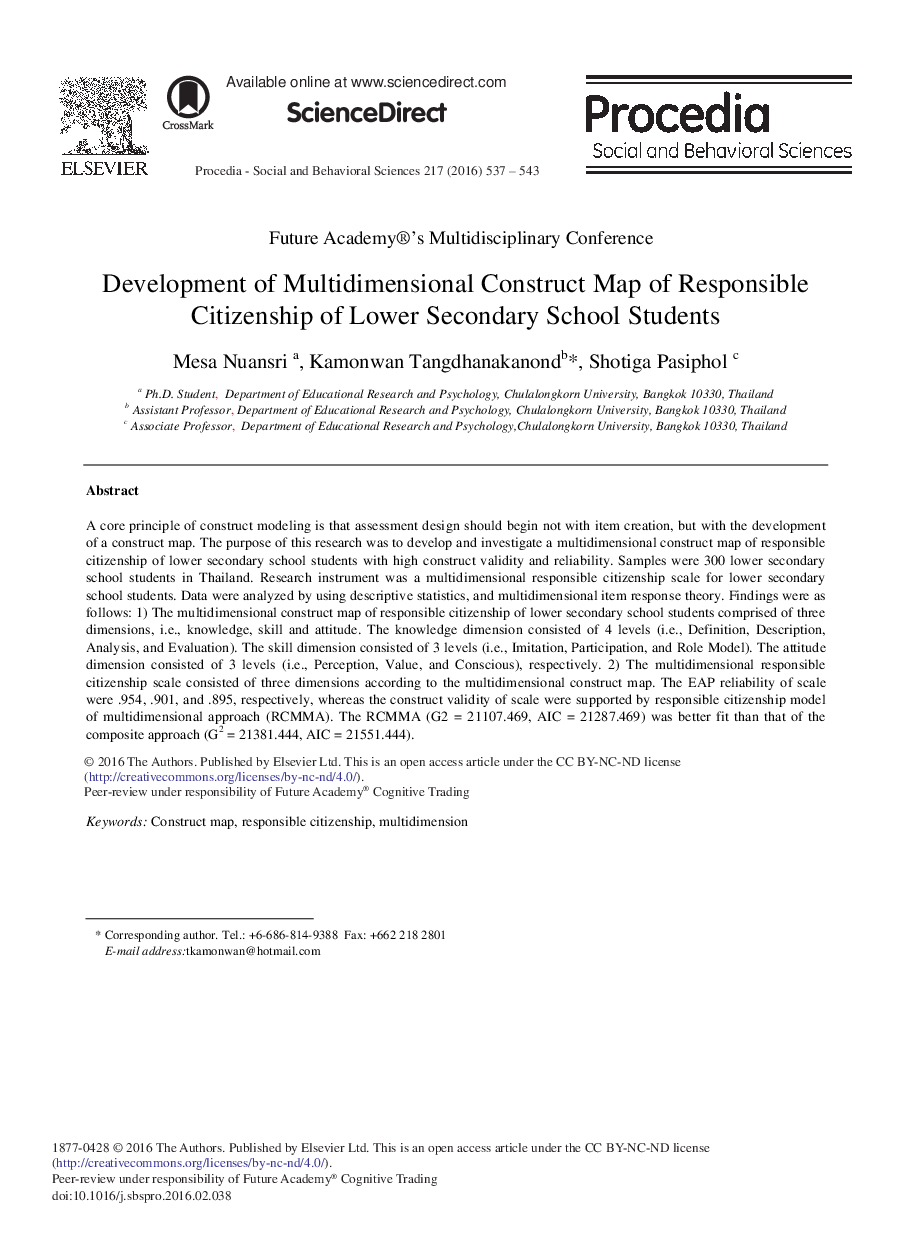| کد مقاله | کد نشریه | سال انتشار | مقاله انگلیسی | نسخه تمام متن |
|---|---|---|---|---|
| 1108622 | 1488342 | 2016 | 7 صفحه PDF | دانلود رایگان |
A core principle of construct modeling is that assessment design should begin not with item creation, but with the development of a construct map. The purpose of this research was to develop and investigate a multidimensional construct map of responsible citizenship of lower secondary school students with high construct validity and reliability. Samples were 300 lower secondary school students in Thailand. Research instrument was a multidimensional responsible citizenship scale for lower secondary school students. Data were analyzed by using descriptive statistics, and multidimensional item response theory. Findings were as follows: 1) The multidimensional construct map of responsible citizenship of lower secondary school students comprised of three dimensions, i.e., knowledge, skill and attitude. The knowledge dimension consisted of 4 levels (i.e., Definition, Description, Analysis, and Evaluation). The skill dimension consisted of 3 levels (i.e., Imitation, Participation, and Role Model). The attitude dimension consisted of 3 levels (i.e., Perception, Value, and Conscious), respectively. 2) The multidimensional responsible citizenship scale consisted of three dimensions according to the multidimensional construct map. The EAP reliability of scale were .954, .901, and .895, respectively, whereas the construct validity of scale were supported by responsible citizenship model of multidimensional approach (RCMMA). The RCMMA (G2 = 21107.469, AIC = 21287.469) was better fit than that of the composite approach (G2 = 21381.444, AIC = 21551.444).
Journal: Procedia - Social and Behavioral Sciences - Volume 217, 5 February 2016, Pages 537-543
